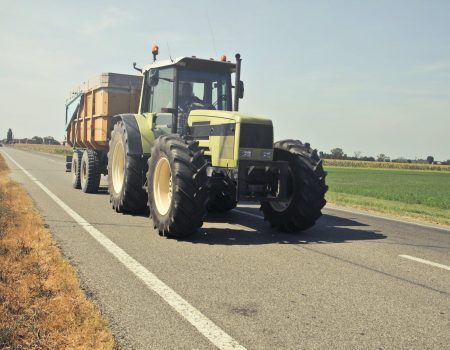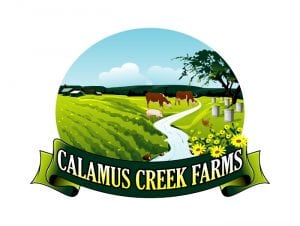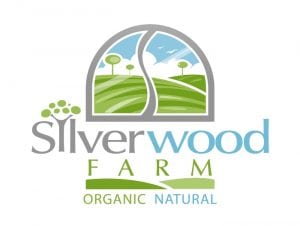
As the saying goes, we are what we eat. The food we put into our bodies has a direct impact on our overall health and well-being. People are more concerned now than ever before about the quality of the food they put on their table – and feed to their kids. As a result, the importance of effective branding your farm and agricultural industry has never loomed larger.
Very few of us ever see the farmers who grow our food, especially if we live in big cities. In order to effectively brand your farm and market their companies, people in the farm industry have to work to project the qualities that consumers find most essential using their farm logos and marketing strategies.
Who Is Your Target Audience?
The first question to ask as you develop a marketing strategy is “Who is your target audience?” Some companies in the farm and agricultural industry market directly to consumers while others focus on selling to farmers or to businesses. For example, a company like John Deere, which makes tractors and other farm equipment, markets primarily to farmers. Their strategy is different than the strategy that would be used by a family farm that sells directly to consumers. Try seeing another strategy if selling straight on the farmer’s markets, Selling your own produce for the farming industry
Branding Your Farm Considerations for the Public
Let’s start by talking about brand your farm and branding considerations for consumers. Buying food is an essential part of our lives. Weekly trips to the supermarket are a given, and in some areas people may also frequent a farmers’ market.
When people buy food for themselves and their family, their most common concerns tend to be:
- 1) Nutrition/health
- 2) Wholesomeness
- 3) Environmentalism
- 4) Taste/Enjoyment
One person may decide to buy only organic produce as a result of their concerns, while another might focus primarily on a food’s flavor. Either way, your marketing message needs to speak to those concerns.

This farming logo we designed is a good example. It features an idyllic, pastoral landscape. A consumer who sees this agricultural logo will easily be able to imagine that the food coming from this farm is fresh, wholesome, and nutritious. The images of nature banish all thoughts of harmful farming methods.
Brand Your Farm Considerations for Other Farmers
What if your company is marketing primarily to farmers or agriculture companies? A manufacturer who makes tractors or fertilizer might very well focus on business to business marketing.
In that case, the primary branding your farm concerns might be:
1) Reliability
2) Affordability
3) Safety
These concerns are different than those of consumers, but that doesn’t mean that agricultural companies and consumers don’t share a desire to use environmentally safe products. Depending upon the product you’re marketing, your branding farm strategy might bring in other issues as well.
Agricultural Logo Design Considerations
One of the first things any company needs to do to create an effective brand is to choose a logo. Logos for companies in the farm industry must do a good job of reflecting the target customer’s values and concerns. If they don’t, customers will look elsewhere.
How to Build Trust with the Public When Branding Your Farm
Trust is key when you’re selling food or farm equipment. Either way, the people who buy it are relying on you to keep them safe. They want to feel confident that your product will suit their needs.
One way to build trust is to use functional colors in your logo. A functional color is a shade that is linked to a purpose or meaning. In the farm industry, the most instantly recognizable and useful functional color is green.
Green is a color that many of us associate with nature and growing. It’s a fresh and wholesome color. Many of the logos we design in the farm industry use green as their primary color. Bringing in other colors as accents can be very effective, particularly if they complement the green and underscore its message of wholesomeness.
Tips for Choosing the Right Agricultural Logo
The farm or agricultural logo you pick is in many ways the face of your company. Unless you’re going to farmers’ markets every day and selling only to people you meet in person, your logo is your opportunity to communicate your values to your customers. For example, this market in Florida is well worth the visit to test your products and your marketing skills.

The primary colors in this logo are green and blue with hints of silver to play up the name of the farm. The images chosen feature grass, trees, and fresh water – and those images continue into the farm’s name, where the “I” in Silverwood is a tree.
The addition of the two words, organic and natural, underneath the farm’s name helps to underscore this farm’s commitment to growing healthy food. Any consumer who sees this logo will understand that this farm has a commitment to the environment and to their customers.
Online Marketing for the Farm Industry
There’s no question that online marketing has made it simultaneously easier and more challenging than ever before for companies to connect with their customers. Even farmers who don’t attend farmers’ markets or interact with the public in the daily lives have the opportunity to connect via social media. It’s a new world, and that means that marketing tactics have to change.
Putting Your Website to Work
The first thing to do when developing an online marketing strategy is to look at your website. Is it sending the message you want it to send? Your logo is important, but the content on your website can do a great deal to communicate with your target customers. To easier brand your farm with the right look.
With that in mind, here are some ways to put your website to work.
1. Make sure that your home page is compelling. A home page is a great place to feature a video highlighting what you do or show off photographs of your farm. For most customers, the home page is the first part of your website they’ll see. It should sing. Get a nice website from us actually.
2. Your site as a whole should be easy to navigate. Most sites have menus either at the top or on the left-hand side of the page. That’s what users will expect – so don’t try to reinvent the wheel. Make everything easy to find. All of your links should work, your site should load quickly, and there should be a search bar at the top right-hand side of the page so people can cut to the chase and find what they want. It’s also a good idea to make your logo link back to your home page so people can click on it if they need to.
3. Try to update your site regularly. One of the best ways to do that is by adding a blog if you don’t already have one. Blogging allows companies to retarget their best keywords and forces Google to re-index your site, keeping it close to the top of the search results.
Testing your website should be an ongoing endeavor. If your headline or images could be better, keep testing new ones until you get the results you want.
Social Media Strategies To Brand Your Fram
Marketing on social media is a must for most companies. For farmers, social media provides a way to connect directly with consumers. You can showcase your products, explain your methods, or even give people a glimpse behind the scenes. An easy way to brand your farm.

The primary goal of your social media pages should be to build trust with the public. The more they see of you, the more likely it is that they will believe that the items you produce are healthy for them and their families. Here are some strategies to employ:
1) Pick the sites that your customers are most likely to use and maintain an active presence there. Don’t bother setting up a Snapchat account if you think the majority of your customers are on Facebook.
2) Establish a posting schedule and stick to it. You’re better off posting three times a week with regularity than posting 10 times one week and none the next. You can use scheduling tools to help you stay on track.
3) Keep an eye on comments and respond regularly. Many companies are integrating customer service with social media and you should, too.
4) Consider Facebook advertising as a low-cost alternative to search engine advertising.
These simple strategies can help you make the most of your social media accounts.
Content Marketing Ideas For Your Farm
To finish, let’s talk about some content marketing ideas you can use to promote your company and connect with customers. We already talked about blogging, but keep that in mind as an extremely effective content marketing tactic. Here are some others:
1) Feature photographs of seasonal items and share recipes to help customers understand how to use them. This is an especially good idea if you grow veggies that people might not use on a regular basis.
2) Shoot videos of your farm. You may want to include videos of animals at pasture or even feature some of your employees at work.
3) Encourage customers to share their own content with you – and then re-share it with your followers. If a customer did something particularly innovative with your new crop of blueberries, why not give them a lift by sharing their content and interacting with them on a personal level?
4) Tell a farm-to-table story featuring a local restauranteur. You might be able to do something like this with a combination of photographs and written content, or else in a video.
These are just a few ideas. Use your imagination and, if you’re really stumped, ask your followers for suggestions. They’ll tell you what they want to see!
Conclusion
The key consideration to brand your farm or agricultural company is trust. Your farm logo, website, social media accounts, and content should all work together to increase brand awareness and let your customers know that they can count on you to provide healthy food for their families.
